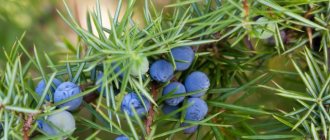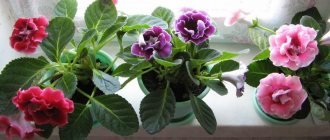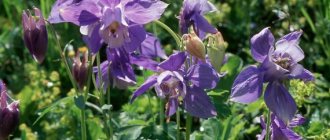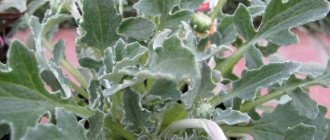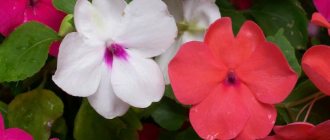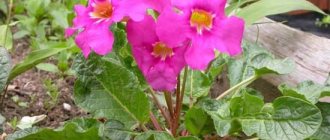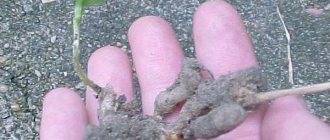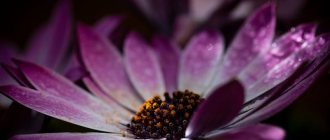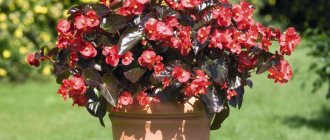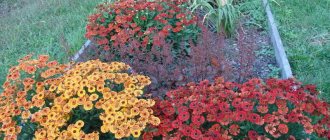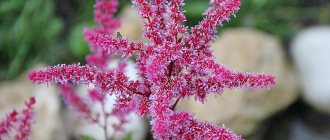The main highlight of amaranth is its original inflorescences. They are velvet panicles - erect or hanging. The crop is grown as an annual. In southern latitudes, amaranth can be sown directly in open ground; in the middle zone, you will have to first grow seedlings. Sowing at home will allow you to get earlier flowering. For the process to be successful, a number of subtleties need to be taken into account. You will need to pay attention to the quality of the seeds themselves and the care of the seedlings.
Planting and caring for amaranth
- Planting: sowing seeds in the ground - at the end of April or in May; sowing seeds for seedlings - at the end of March, transplanting seedlings into the ground - from mid to late May.
- Flowering: from June to frost.
- Lighting: bright sunlight.
- Soil: light, nutritious, lime-containing soils that are not too wet or acidic.
- Watering: during the period of seedlings rooting in the ground - constant, then watering will be needed only during a prolonged drought.
- Feeding: mullein solution 3-4 times per season, preferably in the evening.
- Reproduction: seed.
- Pests: aphids, weevil larvae.
- Diseases: root and gray rot, powdery mildew, rust.
- Properties: all parts of amaranth are edible and healthy.
Read more about growing amaranth below.
Pests and diseases
Tricolor amaranth almost never gets sick, but in rainy summers it can be affected by rot. An aphid attack is also possible.
As you can see, tricolor amaranth is a truly amazing plant. An unusually impressive garden decoration, the best immunity activator and an easy-to-care plant - all this is about it. Try growing amaranth and see that it is a gardener's dream come true.
You can also read more about growing amaranth caudate from seeds.
And for those who like to know more, we suggest you watch the video about tricolor amaranth
Botanical description
Amaranth stems can be simple or branched, leaves can be alternate, entire, lanceolate, ovoid or diamond-shaped, the base of the leaf blade is elongated into a petiole, the tip of the leaf has a notch and a slight point. Axillary flowers of golden, red, green or purple color are collected in bunches, apical ones - in spike-shaped panicles. The amaranth fruit is a capsule with small seeds. The color of the plant is green, purple, violet, and sometimes all these colors are combined in one plant. The height of amaranth, depending on the type, can be only 30 cm, or can reach three meters. In our climate, amaranth is grown as an annual.
Features of amaranth seeds
Amaranth seeds are difficult to confuse with planting material of other crops. They are very small, like coarse dust. They vary depending on the color of the adult plant:
- Amaranth with light flowers and green leaves. The seeds have a delicate beige tint. The shell is dense, smooth, slightly shiny. You can compare the planting material to white sesame, but very small.
- Plant with red leaves. It is grown as an ornamental crop to decorate a garden plot. It has beautiful flowers and unusual leaves. These varieties have black seeds and also look like coarse dust.
For all varieties, the seeds ripen in about 3 months. To ripen, it is better to store them in a seed box and in a dark place.
Black ornamental seeds
Removing seeds for cultivation
Amaranth seeds are sold at any flower shop. However, gardeners prefer to propagate the crop with their own planting material. You can remove it from an adult flower on your site or ask a neighbor.
Obtaining seeds occurs as follows:
- The plant is cut at the base and then placed on a smooth surface. This could be a table, a stool, a dark corner in a garden house.
- The “panicles” are left to ripen for 2 months. The place should be dry and dark. Constant air circulation is also necessary so that the cut plants are well ventilated.
- The seeds are ready to be extracted when the seed pods turn brown. This means they are dry enough.
- Planting material is removed from the boxes by passing it through a sieve with very small holes. The resulting seeds are kept in a dark room, scattered on a smooth surface. In this state they should rest for about a week. The seeds are stirred regularly.
- Amaranth seeds are a treat for mice. A few elderberry branches, which should be placed around a tray with seeds, will help protect them from rodents.
Dried seeds are placed in paper bags or dry containers. They retain their germination capacity for 4-5 years.
Important! Not all seeds ripen at the same time. Therefore, you need to cut off entire inflorescences at once, otherwise some of the planting material will scatter on the ground. Next season, a whole amaranth garden will grow in this place.
Seed collection process
Prices for amaranth seeds
amaranth seeds Gavrish
Growing amaranth from seeds
How to sow seeds
Growing amaranth is not difficult. In areas where by the end of April the soil at a depth of 4-5 cm has already been warmed by the sun to 10 ºC, you can sow amaranth seeds directly into the soil, but before that you should prepare the area - add 30 g of a mineral mixture or complex mixture to each square meter for digging fertilizers according to instructions. However, when adding fertilizers to the soil, be careful: amaranth has the ability to convert nitrogen fertilizers into nitrates that are hazardous to health, so do not get carried away with the nitrogen component. If you sow amaranth on time, it will quickly grow and you will not have to fight weeds.
So, at the end of April, the seeds are planted one at a time in grooves in moist soil and planted to a depth of 1.5 cm. For convenience, you can mix small seeds with sand or sawdust in a ratio of 1:20 - this makes it easier to sow. A distance of 45 cm is maintained between the rows, between specimens there should be approximately 7-10 cm, so experienced gardeners prefer to suffer with sowing, but do not mix the seeds with sand, but lay them out one at a time. After 8-10 days you will see seedlings, which, if necessary, need to be thinned out and the soil between them loosened. If you planted amaranth later, in May, you will also have to fight weeds.
- Planting hyacinths in the garden
When the amaranth reaches a height of 20 cm, fertilize with nitrogen fertilizer, but the nitrogen concentration should be half as much as the manufacturer recommends. It doesn’t matter whether you grow vegetable amaranth or ornamental amaranth - it will fully ripen in three or three and a half months from the moment of sowing.
Seedling care
The conditions for growing amaranth in seedlings will not complicate you. Amaranth seeds are sown for seedlings at the end of March. Plastic containers or ordinary pots up to 10 cm high are suitable as containers for seedlings. Seeds are embedded in moist soil to a depth of 1.5-2 cm, then the pots are placed in a warm, bright place. Watering of crops is carried out with a sprayer; the optimal temperature for germination is about 22 ºC.
If all these conditions are met, seedlings will appear in less than a week. When the amaranths sprout, thin them out, getting rid of weak shoots, and when three leaves appear on the shoots, plant them in individual pots with a diameter of 12 cm.
Planting amaranth
When to plant
When the soil in the garden has warmed up well and the threat of return frosts has passed, the seedlings can be planted in open ground. This is usually done in mid or late May. The site for amaranth should be well-lit and drained, the soil should be light and nutritious, with a sufficient amount of lime. By and large, amaranth is completely unpretentious, but what it does not tolerate is low temperatures and too much moisture in the soil. Before planting amaranth in open ground, the soil on the site should be dug up with nitroammophoska at the rate of 20 g per 1 m².
How to plant
Amaranth is planted, depending on the type and variety, at a distance of 10 to 30 cm between specimens, and a gap of 45 to 70 cm is maintained between rows. Until the seedlings take root and begin to grow, they need regular watering. And be prepared to cover the area with amaranths if the cold suddenly returns.
Amaranth in landscape design
When designing various compositions with this plant, you need to take into account the size and height of the bush.
Amaranth in the form of a “tree” is well suited for large flower arrangements, as well as for a hedge or tapeworm (single plant). The foliage and inflorescences of various amaranths can harmonize perfectly with ornamental shrubs (barberry, viburnum), perennials and annuals. The combination of reddish-violet and red amaranth with yellowish, white and silvery low-growing crops (rock alyssum, evergreen iberis, jasmine) looks especially original. Amaranth will also look good against the background of lawn grass.
This culture can be used not only for decoration, but also for making salads. Vegetable amaranth grows well in the garden.
There is always a place for amaranth in the garden, as it will decorate flower arrangements throughout the summer and autumn.
Amaranth care
Growing conditions
Actually, caring for amaranth is needed only until the plant begins to grow, but in the first month, amaranth seedlings develop very slowly, so they need watering, weeding and loosening the soil. But then amaranth accelerates its development, and there is no longer room for weeds on the site. Sometimes an amaranth specimen can grow seven centimeters in a day!
Regular watering is also important for amaranth only in the first month in open ground, then the root of the plant penetrates deep into the soil, and the need for watering disappears, unless a dry period of summer comes without rain - then amaranth will need to be watered like any other plant.
It is advisable to feed amaranth 3-4 times per season; the best fertilizer for it is a solution of mullein in a ratio of 1:5 and ash (200 g per 10 liters of water). It is best to fertilize early in the morning after watering the area.
Pests and diseases
Planting and caring for amaranth will not cause you any trouble. In addition, amaranth is very resistant to pests and diseases. However, sometimes it is also affected by aphids or weevils. Weevil larvae develop in plant stems, stunting their growth. Aphids can harm amaranth only at the beginning of its life, and, as a rule, this happens in a damp, rainy summer. Aphids are exterminated by treating amaranth with actellik or fufanon (karbofos). These same drugs also give good results in the fight against weevils.
If too much moisture accumulates in the soil, amaranth can develop fungal diseases, which can be treated by spraying the plants with fungicides - colloidal sulfur, copper sulfate, copper oxychloride and other similar preparations.
Let's talk about leaving
Caring for amaranth or amaranth consists of regular watering, which is especially necessary in the first two months after planting and during very hot times. It is worth remembering that although this crop is considered drought-resistant, it responds well to watering.
Amaranth also needs fertilizing, which is carried out every month. Organic fertilizers with microelements or humic ones (“Ideal”) are best suited for this.
An obligatory point in growing amaranth is loosening and removing weeds, which is carried out throughout the warm season as needed.
Among the diseases that affect this crop, it is worth mentioning fungal diseases that develop with excess moisture. Prevention measures include compliance with all rules of agricultural technology.
Of the insect pests on amaranth, several species of aphids can be observed. Insecticides of contact-intestinal action are suitable for controlling aphids: Actellik, Bankop and Akrin.
The seeds of agarica begin to be collected when they are two-thirds ripe. They are cut, dried in ventilated areas, and then threshed. On average, you can get about 10 grams of seeds from one bush (ornamental species and varieties). Tens of times more seeds are obtained from a fodder amaranth bush.
Amaranth after flowering
How and when to collect seeds
If you want to collect amaranth seeds, select a few of the strongest plants and do not cut off the leaves. As soon as the lower leaves on the amaranth turn red, dry out and fall off, and the stem of the plant turns whitish, choose a dry, fine day, cut the inflorescences from the selected specimens, starting from the bottom of the stem, and place them to dry in a well-ventilated, dry room. After a couple of weeks, when you rub the dried panicles with your hands, the mature seeds easily fall out of the boxes, then all that remains is to sift them through a fine sieve and store them in a box or paper bag. Amaranth seeds do not lose their viability for about five years.
Amaranth in winter
Amaranth in our latitudes does not tolerate even warm winters, which is why it is grown as an annual plant. At the end of the growing season, amaranth plant residues are collected and disposed of. If you are sure that your amaranths are not infected with pests or diseases, place their tops in a compost pit - they will make a good fertilizer. The ground part of amaranth is also used as feed for animals, for example, pigs and poultry, since in addition to high-quality protein it contains protein, a lot of carotene and vitamin C.
What kind of amaranth flower is it?
The flowering period of this plant begins when panicles appear on its “crown”. One such panicle is an amaranth flower. The burgundy panicles of amaranth are usually called inflorescences, but in fact these are already ripe seeds of the plant. True inflorescences are yellowish in color. Gradually they darken and acquire a rich burgundy hue.
The double inflorescences of the amaranth plant are very unusual: not only in their shape, but also in their content. They consist of many tiny amaranth seeds, which are instantly carried by the wind throughout the area. That is why, in order to avoid unwanted sowing, gardeners cut off panicles immediately after they appear. Well, if you need seeds to propagate this plant, you will have to spend a lot of time near it, collecting microscopic material.
Types and varieties
Paniculate or purple amaranth (Amaranthus paniculatus = Amaranthus cruentus)
Most often used for decorating flower beds and making bouquets, including winter ones. This is an annual plant with a height of 75 to 150 cm with elongated, ovate, red-brown leaves with a sharp, elongated tip. Small red flowers are collected in erect inflorescences. This species blooms in June and blooms until cold weather. In cultivation since 1798, it has several forms: nana - a low-growing form up to 50 cm high, cruentus - with drooping inflorescences of red flowers, sanguineus - vertical inflorescences with hanging ends.
- Astrantia: growing from seeds, types and varieties
Most often, low-growing varieties with a height of 25-40 cm are used in floriculture:
- Rother Dam and Rother Paris - varieties 50-60 cm high with dark red foliage and dark burgundy flowers;
- Zwergfakel and Grunefakel - varieties up to 35 cm high with purple and dark green inflorescences, respectively;
- Hot Biscuit is the tallest variety, reaching a meter in height, with green foliage and red-orange inflorescences.
Dark or sad amaranth (Amaranthus hypochondriacus)
A low-branched species up to one and a half meters high with oblong-lanceolate pointed leaves of purple or purple-green color and vertical spike-shaped panicles of inflorescences of various colors, but most often dark red. In culture since 1548. There is a blood-red form - sanguineus, with hanging inflorescences.
Varieties:
- Pygmy Torch - amaranth 60 cm in height, the dark purple inflorescences of which turn chestnut in the fall, and the leaves become multi-colored;
- Green Thumb is a variety up to 40 cm high, colored in different emerald tones and often used by phytodesigners when composing dry bouquets.
Tricolor amaranth (Amaranthus tricolor)
Decorative deciduous plant from 70 cm to one and a half meters high with erect stems forming a pyramidal bush. The leaves of tricolor amaranth are elongated, ovate or narrow, sometimes wavy, colored in combinations of yellow, green and red - young leaves are unusually bright and beautiful. It blooms from June until frost, has several varieties: willow (salicifolius) with narrow, bronze-green wavy leaves up to 20 cm long and half a centimeter wide; red-green (rubriviridis) with leaves of a ruby-violet hue with green spots; red (ruber) with blood-red leaves and bright (splendens), which has dark green leaves with brown spots.
Varieties:
- amaranth Illumination is a powerful plant up to 70 cm high with spectacular large leaves. Young leaves are red-yellow, and older ones are red-orange, the lower leaves are bronze in color;
- Aurora - this variety has wavy apical leaves of a golden yellow hue;
- Earlie Splender - apical leaves of a bright crimson hue, lower ones - almost black with a purple-green tint.
Amaranthus caudatus
It grows naturally in tropical Africa, Asia and South America. The stems are powerful, erect, up to one and a half meters high. The leaves are large, elongated-ovate, green or purple-green in color. Small dark red, yellowish-green or crimson flowers are collected in spherical balls, which in turn are arranged in long hanging paniculate inflorescences. This species blooms from June to October, in cultivation since 1568. It has several forms: white-flowered - with greenish-white flowers; green - this form with pale green inflorescences is in great demand among florists; bead-shaped - flowers of this shape are collected in a whorl and look like long beads strung on a stem.
Varieties:
- Rotshvants - with red inflorescences;
- Grunschwanz - with light green inflorescences.
Both varieties reach a height of 75 cm and are powerful bushes that occupy a large space.
General information
Amaranth (Shchiritsa) is a genus of plants in the Amaranthaceae family, which includes about 100 species. Amaranths are common in regions with temperate and subtropical climates. The homeland of most species is South America. Northern India and China are considered to be the secondary centers of formation.
Botanical description
Mostly annual herbaceous plants up to a meter high.
Stems are erect, often pubescent.
The leaves are entire, diamond-shaped, lanceolate or ovate, with a petiole. They can be green and red, and in some decorative forms they can be multi-colored.
Among amaranths there are both monoecious and dioecious plants. Flowers develop in the axils of the leaves and on the tops. The axillary bunches are collected in small inflorescences in the form of a bunch, the apical ones - in panicles, which can be very long. The flowers are very small, but if they are brightly colored, then due to the large number they look quite decorative.
Article on the topic: Chinese aster - beneficial properties, description
The fruit is a capsule. The seeds are small - the weight of 1000 seeds is about 0.4 g. One plant produces up to 500,000 seeds.
Application
Amaranth is cultivated over large areas as a fodder crop - the grain is used as poultry feed, and the green mass is used for ensiling, feeding and grazing to livestock.
In South America, amaranth is still grown as a grain crop, and among the Indians of South America it was one of the most important crops for 8,000 years. It was and is consumed both in the form of porridge and in the form of flour products made from amaranth flour.
Amaranth oil is obtained from amaranth seeds - more about it below.
Many forms are grown as ornamental crops. A few photos of decorative amaranths below:
Amaranth - harm and benefit
Scientists consider amaranth to be a plant of the 21st century, capable of feeding and healing all of humanity. This may be an exaggeration, but there is certainly some truth in this statement. All parts of amaranth are edible, nutritious and healthy, but the most valuable product is the amaranth seeds. The benefit of amaranth is that it contains a whole complex of fatty acids necessary for humans - stearic, oleic, linoleic and palmitic, and this property of amaranth allows it to be used in the production of dietary products. In addition, amaranth contains squalene, vitamins B, C, D, P and E, rutin, carotene, steroids, bile and pantothenic acid and many other substances necessary for human health.
Amaranth leaves are not inferior to spinach in the amount of nutrients they contain, but significantly exceed it in the amount of protein. Amaranth protein contains the amino acid lysine, the most important amino acid for humans, in almost the same amount as soybeans, but protein from amaranth is much easier to digest than protein from soy, wheat or corn. The Japanese compare amaranth greens with squid meat and believe that daily consumption of amaranth in food restores vital energy and rejuvenates the human body.
You can eat not only the leaves of the vegetable amaranth - ornamental species and varieties of the plant are also rich in vitamins, protein and microelements. However, it is better not to eat seeds of ornamental plants. By the way, it is easy to distinguish medicinal amaranth from ornamental amaranth by its seeds - in medicinal and vegetable varieties, the seeds are lighter than the seeds of ornamental varieties.
Amaranth oil is the most valuable of vegetable oils, having twice the healing properties of sea buckthorn oil. Creams and masks based on amaranth oil rejuvenate the skin, increase its tone and provide antibacterial protection.
Sprouted amaranth seeds have the same value in composition as mother's milk. They are often used not only in medicine, but also in cooking.
The beneficial properties of amaranth are used to treat obesity, atherosclerosis, neuroses, and dysbacteriosis with tea made from its leaves. Greens and amaranth grains effectively heal the liver and kidneys, treat adenoma, cardiovascular diseases, as well as inflammatory processes of the urinary system. The properties of amaranth, when constantly consumed in food, help to cope even with malignant tumors, and also strengthen the human immune system.
By adding amaranth leaves to summer salads, you extend your life and improve your health. Amaranth seed flour added to wheat improves the taste of baked goods and slows down the process of baking. Roasted amaranth seeds are very tasty and resemble nuts; they are good to sprinkle on buns and bread meat. Adding a single amaranth leaf to a three-liter jar will keep your cucumbers crisp and firm until spring. We offer you several amaranth recipes and hope that you will like them.
Dessert with amaranth and nuts. Heat the honey and butter over low heat, stirring, add any nuts and amaranth seeds, mix, pour into the mold, and after cooling, cut into pieces.
Salad. 200 g of amaranth leaves, 50 g of wild garlic leaves or young winter garlic, 200 g of nettle leaves, scald with boiling water, cut, salt and season with vegetable oil or sour cream.
Sauce. Bring 300 g of cream to a boil, add 200 g of chopped amaranth leaves, 100 g of grated soft cheese, add a little pepper and heat, stirring, over the fire until the cheese is completely melted.
- Sheep: growing and caring for the garden
Cypriot soup. Soak a glass of chickpeas overnight. Cook it until done. Saute the chopped onion and carrot, add them to the broth with chickpeas and beat everything with a blender. Separately, mix half a glass of amaranth seeds with chickpea-vegetable puree, boiled for 25 minutes, add canned or frozen sweet corn, pepper, pour in 2 tablespoons of lemon juice and bring to a boil.
Some readers ask if we know anything about the dangers of amaranth. I answer: we don’t know.
Historical reference
As noted, amaranth comes from South America, where the indigenous population has long used it for food and medicinal purposes. Scarlet amaranth and caudate amaranth were staple foods of the Aztecs and played an important role in religious rites.
The Spaniards brought amaranth seeds to Europe; it was first grown as an ornamental plant, and from the 18th century it began to be cultivated as a cereal and fodder crop.
The botanical name of the plant comes from the word “amaranthos”, which means “unfading flower” (from the Greek “a” - not, “maraino” - fade, “anthos” - flower).
The plant has other names: velvet, axamitnik, cockscombs, cat's tail.
Use in folk medicine
Amaranth has been used since ancient times to treat many diseases. In folk medicine, amaranth is interesting as a source of many healing substances; it is used for heart diseases, gastrointestinal infections, eczema, psoriasis, dermatitis, erosions, endometriosis, colitis, and externally for fungal diseases. Amaranth infusion is used to treat kidney and liver diseases, as well as enuresis and inflammation of the genitourinary system. Juice from fresh amaranth leaves is used for stomach pain, gastritis, and diabetes. A tincture of dried amaranth seeds and leaves is used to prevent flu and colds. Amaranth baths are taken to treat skin diseases, allergies, diathesis, and rashes. Amaranth seed oil is used to treat burns, bedsores, insect bites, and scars. Sprouted amaranth seeds are used to treat cancer. Amaranth juice and tincture can be used as an antitumor agent both internally and externally. A decoction of amaranth roots is used against guinea worm and jaundice. A decoction of roots and seeds is also used for dysentery. For inflammation of the mucous membranes of the oral cavity, use amaranth juice in a ratio of 1:5 for rinsing. To rejuvenate the body and remove harmful substances from it, take a collection of amaranth, St. John's wort, birch buds, and chamomile in equal parts. In Chinese medicine, amaranth is used to fight tumors and slow down the aging process.
